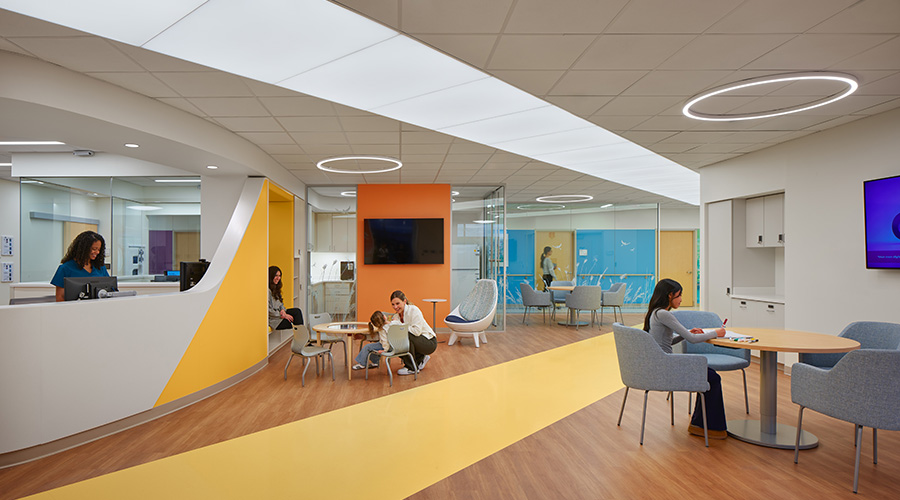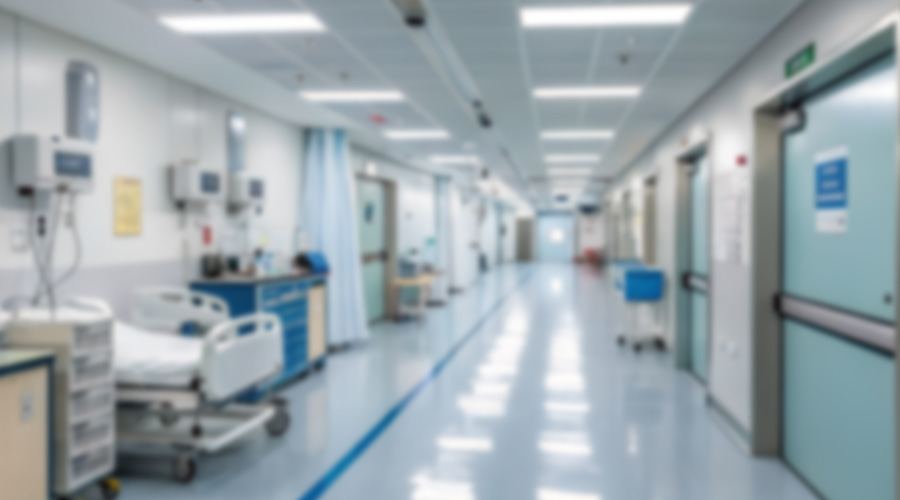As drug-resistant strains of bacteria and viruses continue to arise, St. Mary’s Health Care System is taking an innovative step to help protect patients from infection: the Athens hospital is the first in Northeast Georgia to use powerful ultraviolet radiation to treat surgical suites, isolation rooms and other areas of the hospital.
Ultraviolet light (UV) is invisible to the naked eye and it is categorized by three sub-types: UV-A, UV-B and UV-C. While UV-A and UV-B are the types of light that cause sunburns and skin cancer, UV-C light can be used to damage the DNA of microorganisms to make it impossible for them to reproduce. By combining the UV-C light used in the Clorox Healthcare™ Optimum-UV™ System with traditional deep cleaning and disinfection, St. Mary’s is able to eliminate more than 99.9 percent of drug-resistant organisms on surfaces, says infection prevention and control manager Doug Blomberg, RN.
“We use the system in our surgical suites and isolation rooms, plus anywhere else it’s needed,” Blomberg says. “We already have extremely low rates of hospital-acquired infections, but since the UV system works on all germs – even those that are drug-resistant – it can help us continue to keep our rates low.”
Numerous drug-resistant organisms have arisen in recent years. These are germs that have evolved defenses against antibiotics. Well-known examples include MSRA – a bacterium that is resistant to all forms of penicillin – and Clostridium difficile (“C-diff”), a spore-forming bacterium that causes severe gastrointestinal illness and can live on surfaces for months. In addition to being resistant to antibiotics, C-diff spores are also resistant to certain types of chemical disinfectants.
But none of them are resistant to the genetic damage caused by UV rays. Even when bacteria retreat into hard shells or viruses transform into a crystalized state, their genetic material can still be inactivated by ultraviolet light.
For an added level of confidence, the Optimum-UV™ System uses UV-C, the highest-energy form of ultraviolet light and the form that is most effective at inactivating microorganisms.
“It’s vitally important that we prevent the spread of germs inside the hospital,” Blomberg says. “Our patients depend on us to ensure that infectious agents don’t have a chance to move from one patient to another. When we zap the rooms, we can have a higher level of confidence that we’re doing everything possible to protect our patients.”
At St. Mary’s, the primary use of the Optimum-UV™ System is in the terminal cleaning of each surgical room, says Environmental Services Director Renzo Medrano. This is the deep cleaning that each operating room receives at the end of the day. First, the room is cleaned using standard procedures, including wiping down all surfaces with a chemical disinfectant. Then, the Optimum-UV™ System is brought into the room and turned on. After a pre-determined exposure time based on the size of the room, usually 5-10 minutes, the unit shuts off. The technician then repositions the unit and turns it on again to ensure complete saturation of the room with UV-C light, even under tables and behind equipment.
“We use it to provide an additional layer of treatment for everything in the room, from ceiling to floor,” Medrano says. “We especially want to capture high-touch areas such as bed railings, phones and call buttons. The system is a great asset and a wonderful investment in patient safety.”
St. Mary’s acquired two Optimum-UV™ System units, Medrano notes. One is dedicated to the hospital’s surgical suites. The other “floats” to other areas of the hospital. One of those is the Emergency Department, in which every room receives UV treatment once a week. In addition, every isolation room is treated between patients, and other patient rooms, public restrooms and waiting areas are treated on a rotating basis.
Medrano and Blomberg note that the machine is simple to use, highly effective and safe for patients and staff. The device features four infrared motion sensors that can detect the presence of anyone in the room and stop operation for enhanced safety. As a result, the device can’t be used in an occupied room and the technician operating it must leave the room while it is in operation.
St. Mary’s began using the UV system late last year in conjunction with a number of new strategies aimed at preventing hospital-acquired infections.
“We’ve seen significant reductions in our already low infection rates,” Blomberg says. “For the last few years, our infection rates have been better than national averages, and we are working to continue making progress. The Optimum-UV™ System is an important part of that effort."

 Contaminants Under Foot: A Closer Look at Patient Room Floors
Contaminants Under Foot: A Closer Look at Patient Room Floors Power Outages Largely Driven by Extreme Weather Events
Power Outages Largely Driven by Extreme Weather Events Nemours Children's Health Opens New Moseley Foundation Institute Hospital
Nemours Children's Health Opens New Moseley Foundation Institute Hospital Code Compliance Isn't Enough for Healthcare Resilience
Code Compliance Isn't Enough for Healthcare Resilience Ribbon Cutting Marks First Phase Completion for New Montefiore Einstein Facility
Ribbon Cutting Marks First Phase Completion for New Montefiore Einstein Facility